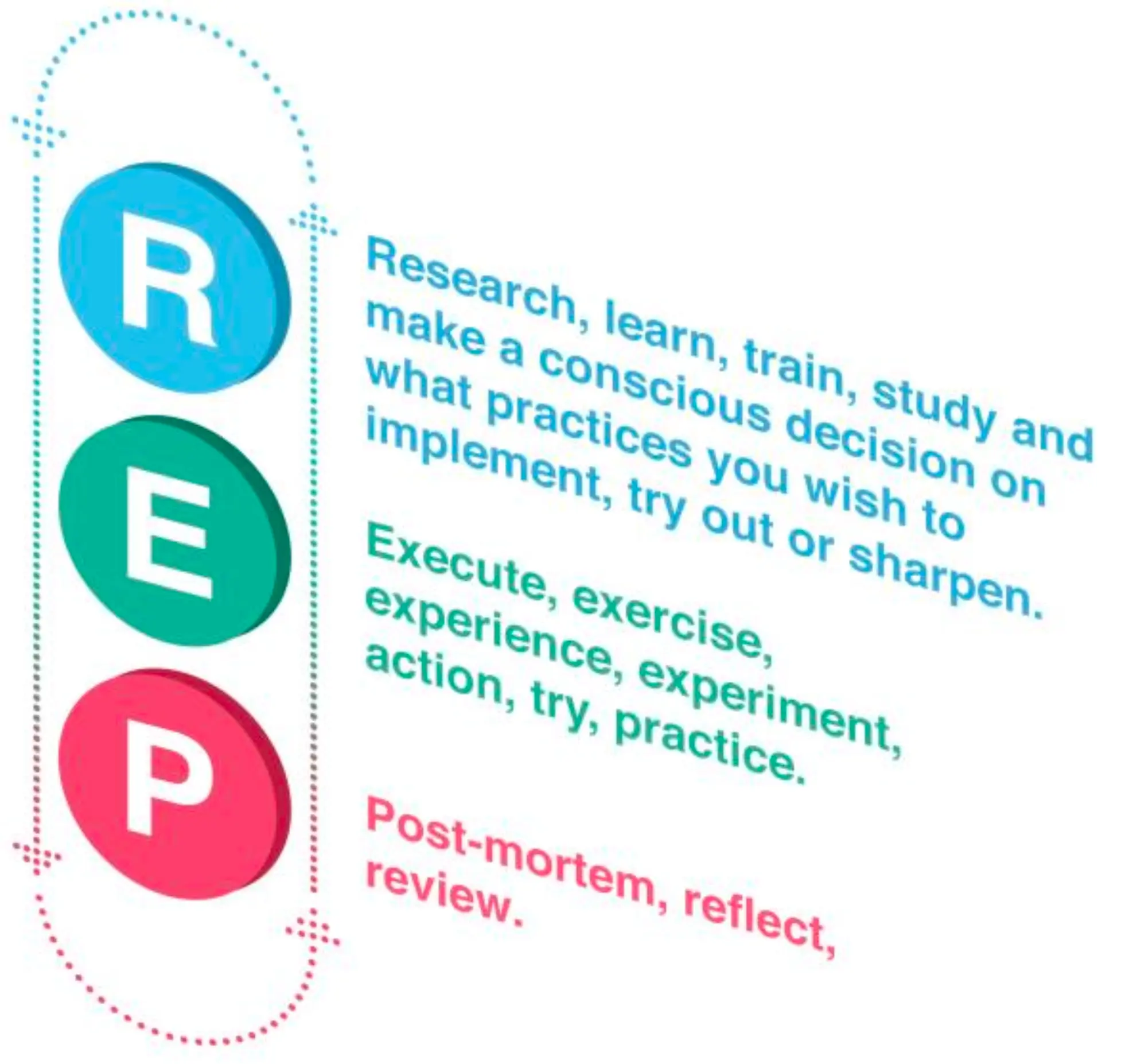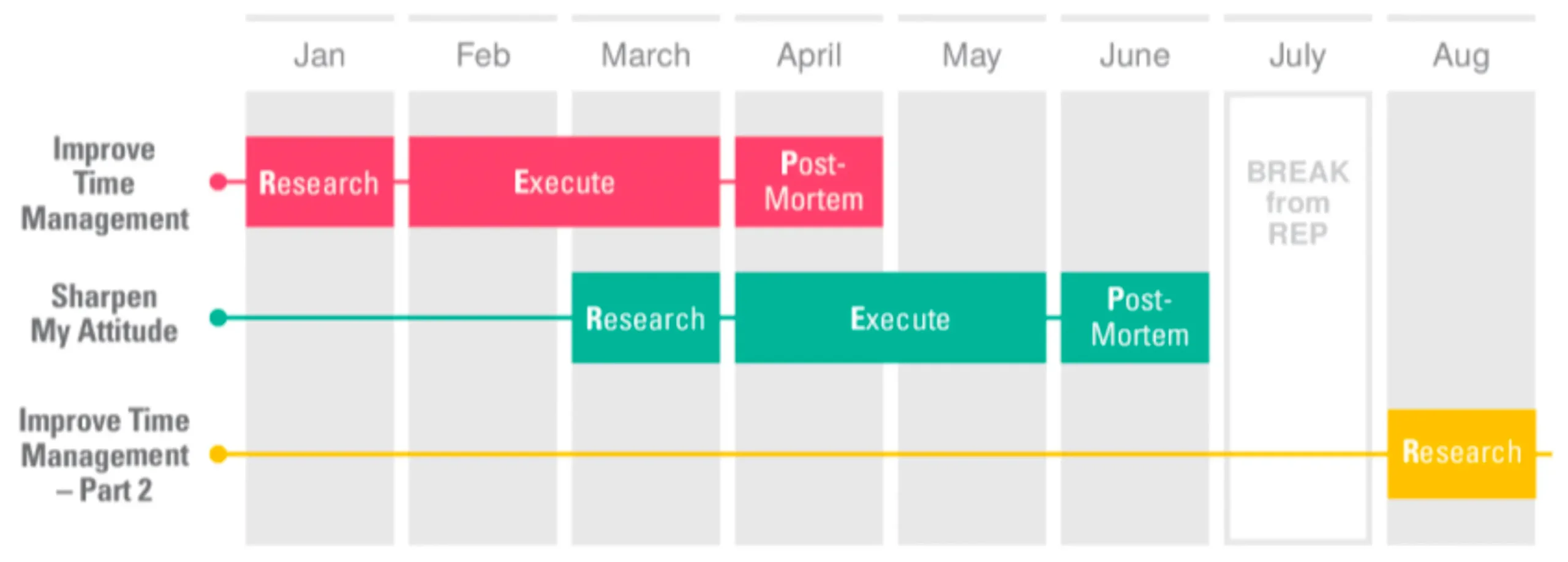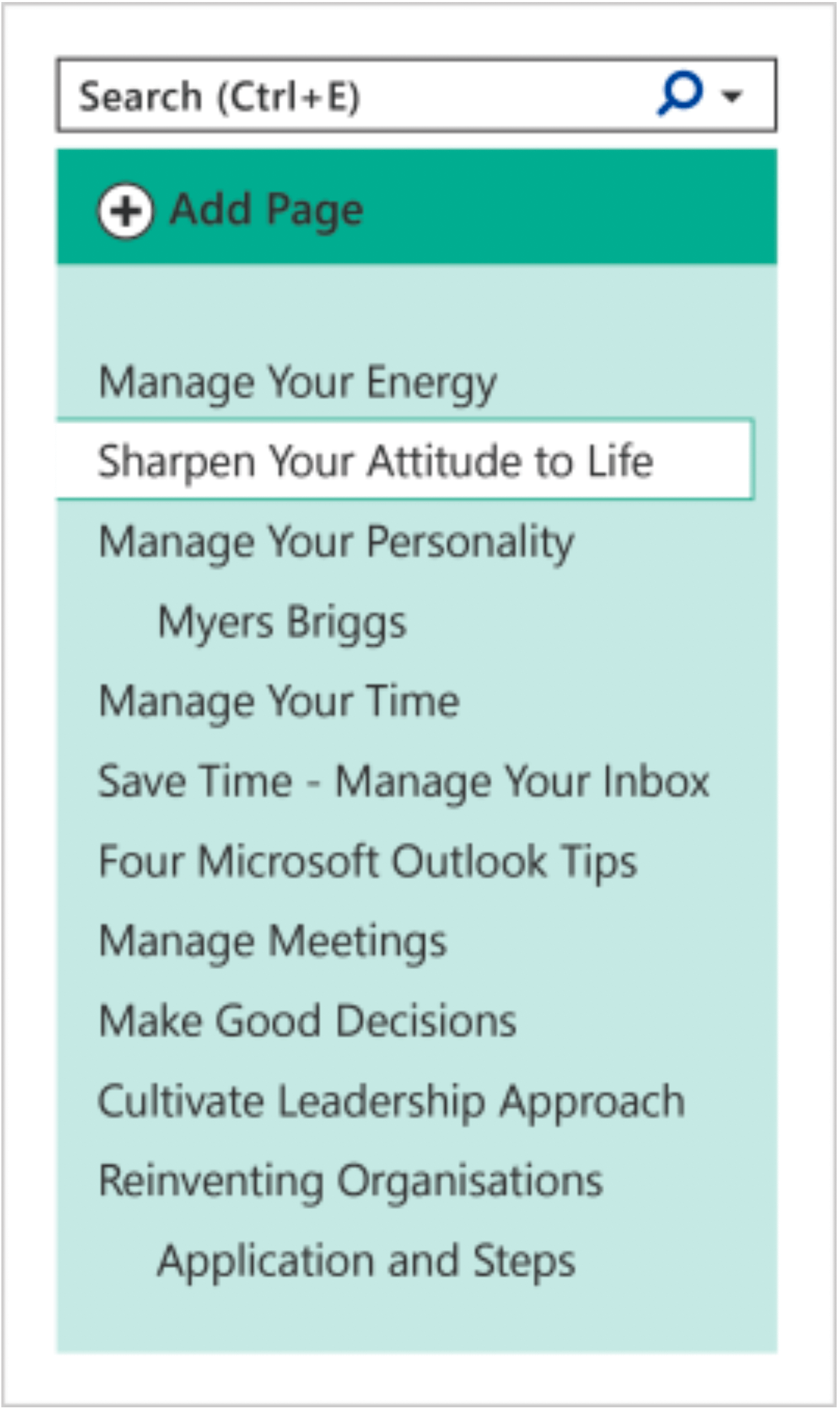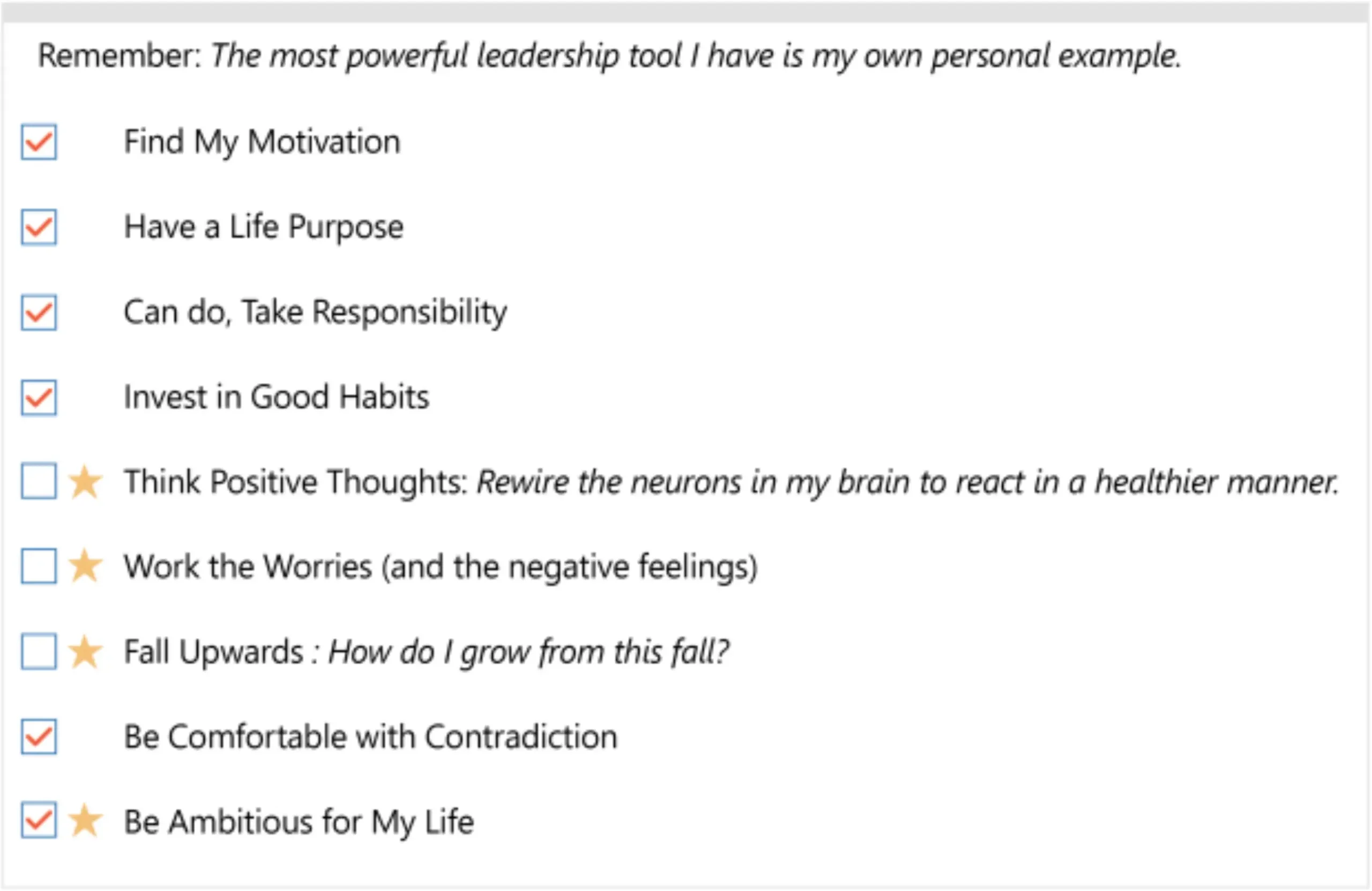Section 1. Personal Change and REP
Learn how to gradually and intentionally manage your personal and professional development with the REP Approach. Watch Section 1 or read the chapter below.
Introduction
“Ah, but a man’s reach should exceed his grasp, or what’s a heaven for?” – Robert Browning
This handbook is full of ideas, advice, and tips, but how do you make the ones you like real and active for you? How do you make the common sense be common practice, whether you find it in this handbook or elsewhere? The handbook starts by addressing this key question, so you have a pragmatic model to make the desired be real for you, on your personal and professional journey over the coming weeks, months, and years.
We are all a work in progress, and this handbook helps you figure how to do some of that work! Reaching your full potential, and becoming the best that you can be is a stretch. This book aims to help in this beautiful human quest.
Change Management – Start|Evolve
If you decide that you wish to implement some of the ideas in this handbook, let me add some advice. I am very strong believer in the “Start|Evolve” approach.
I often see individuals and organizations go from a place of few common practices to a place where they are trying to implement a lot too quickly. An agile approach, where a little delivered quickly with frequent feedback is a stronger, more realistic, and reliable method of building sustainable improvement.
Some people find it hard to make changes. They get stuck in a rut. As a result, the questions become: How do I get out of it? How do I move? How do I change? This is where “Start|Evolve” really comes into play.
What you need to do is make a start. Get some momentum and keep going. Aristotle put it well when he said, “that which we learn to do, we learn by doing”. In the main, you have to do, in order to deeply learn. It is the doing that helps us change. The doing brings us along. This is a very real and pragmatic approach.
Information has a very short half-life. The issue with picking up a new piece of information is you forget it very quickly unless you do something with it. We tend to confuse reading many books and hearing a lot of stuff with making a change.
One of the other challenges is much of what we hear and read, including what you are reading in this handbook, is common sense, so we tend to say, “sure, I knew that!”. And, as my father always said to me: “Common sense, unfortunately Éamonn, it’s just not that common!” Moreover, the reason it is not that common is that we do not practice what we learn. And, if we do not practice what we learn, it does not become a part of how we naturally operate. It does not become a part of the way we work. At one level, change is hard, but at another level, when you understand how to change, it becomes easier. Just start. Go for it and do not be afraid to fall.
Please feel confident in selecting and starting with a small amount of the advice from this book to implement fast and enjoy early success on your own and/or with your team(s). Then, every week, month, or quarter, come back and evolve these practices based on feedback from your experiences, and some more of the guidance contained in this book. If you remember this “Start|Evolve” approach, you will get there sooner and better.
How to Use this Book – A Handbook
There is too much advice in this book to implement in one go. This is a real positive! I suggest you read the book once through and then come back later as needed to use this book as a handbook. Perhaps mark with an * the ideas that you feel might be helpful. Feel free to skip chapters you have less interest in on your first read.
If there are practices suggested that you do not like or believe in, then please ignore them! Each chapter represents an actionable chunk of personal or collaborative leadership advice and ends with an implementation exercise. Read and exercise the pieces of this book you believe would be helpful, at a time you believe is relevant. Timing is everything, as they say.
If you do decide to use this book as a handbook and come back for advice and exercises, it is a good idea to keep a journal with your notes and progress. More to follow on this in the paragraphs below.
My real hope is that you will find practical leadership advice in this book to use and benefit from more broadly in your life. I wish you much success in working this book in the days, weeks, months and years ahead. To this end, this book is called a handbook!
Change Management and REP
I often see people fall into the trap of making some change with initial success and then stop, so I crafted the “REP” approach. REP is a play on the word ‘repetition’. REP stands for Research, Execute, and Post-Mortem. REP is a very simple but effective personal change management process.
We all know that when we repeat something often enough, we tend to get good at it. Now we need to repeat it intelligently. We cannot repeat it the exact same way every time and expect better results. We have to make adjustments. It is like riding a bike. If you ride a bike for weeks and months, you get good at riding a bike. Repetition is an important aspect of mastery.
REP: Research Phase
The “R” phase is where you Research to gain new knowledge. You are seeking best practices. You are looking for great approaches. You are also trying to decide which ones you are going to trial. In this research phase, have fun. Enjoy learning. Love learning. Enjoy researching, looking for new approaches, and looking for new practices. Research can be done in many ways. It can be done online. You can talk to colleagues. You can take some personal and collaborative leadership guidance from this handbook. You have an infinite source of ideas these days and you should enjoy researching them, studying them, learning from them.
As you research, it will be most helpful to keep a REP Journal. You update the REP Journal continuously with notes on anything you liked and thought you would like to experiment to see if it might work for you.
At the end of the “R” phase, look through the ideas in your REP Journal and pick a handful. Be realistic! If you have twenty ideas, pick two, three or just pick one if that is what you are comfortable with. You must then decide where you are going to trial these ideas. Where are you going to execute? When are you going to exercise?
The output of the “R” phase is threefold: new ideas, new energy, and a decision. The latter is key: a decision on which of the ideas you are going to try and practice. This energy and decision gets you moving, and once you start moving, momentum is now possible.
REP: Execute Phase
The “E” phase is where you Execute these new ideas. You exercise them, try them out, practice them, and experiment with them. The essence of the Execute phase is that you “do it”. You try out and prototype the new ideas or practices to see what works. Ideally, you lean back on the wisdom in the Research phase and call on your manager, coach, or mentor to help you. There is no question if you execute honestly and earnestly, you will be performing better this time than you were the last time. And, you will have succeeded.
One thing to consider in the Execute phase is you do not have to work alone. Think about the people in the world who are at the top of their game. They all have coaches, mentors, friends, a shoulder to cry on, someone to push them, someone to nudge them, someone to question them. They have someone behind them who gives them support. If the best in the world achieve their best with a coach, why wouldn’t you have one also? Why not ask someone you believe in and trust to be your coach. You deserve a coach – we all do.
REP: Post-Mortem Phase
The “P” or Post-Mortem phase is where you ask yourself, “How did these new ideas work for me, compared to my intention?” You should celebrate and enjoy any success in the Execute phase. However, you should not rest on your laurels. You need time out to reflect. You need to think through which ideas and practices worked really well and which could have worked better (if any). It will be very helpful to write these reflections in your REP Journal.
One of the challenges with making a change is people do not take the time to research new approaches. Those that do are ahead. Another challenge we have is that of the many people who do the research, not all execute the new ideas. They do not practice. Those who do practice are way ahead. Maybe they are even getting fifty, sixty, seventy percent of the value. The people who find and research new ideas, and execute them, and actually stop to think afterwards become the masters. Keep this in mind and understand that reflection is a very important part of mastery.
At the end of the Post-Mortem phase, you may take a break to celebrate and enjoy your success, but you also get ready to start the next REP cycle. It may not be today that you start the REP cycle. It may not be tomorrow or even next month and that is ok. It is repetition after all, so you need to repeat the cycle to improve.
REP Repeatedly
In the Post-Mortem, you reflected on what happened in the Execute phase. You have really learned from this experience. You know what worked and what needs to be tweaked. Now, go back to your Research phase and look at all the ideas you had. Maybe you decided to execute a few and they worked well. There were perhaps other ideas that you did not execute during your first REP; pick one or two new ideas and repeat the cycle again.
This REP approach can be used to help you adopt and adapt the personal and collaborative leadership practices described in this handbook. REP is designed to improve capability and to foster creativity.
REP your way to success. We all know someone who goes to the gym to do REP’s. They get stronger one day at a time and by some miracle, twelve months down the road, they are really fit! When it comes to REP, it is the same principle. It is repetition, repetitio, it is REP. My personal change management suggestion is to REP your way to success. REP your way to achieve your ambitions. REP your way to change. REP your way to happiness. Please remember that this advancement will not happen by accident. Be intentional about how you want to live your life, about how you change, and use REP or some similar pattern to achieve that change.
Always remember, “You can do anything you want to do in life, you just have to want to do it.”
Long REP Schedule
You can do more than one REP at once and therefore your REPs overlap, but you do need to give enough time to complete the three stages of REP. Here is a sample of scheduling REPs in parallel.
- January: Research phase on your first REP (e.g., Improve Time Management).
- February and March: Execute phase for your first REP (e.g., Improve Time Management). March: Research phase of your second REP (e.g., Sharpen My Attitude).
- April: Post-Mortem phase for the first REP (e.g., Improve Time Management). Decide if and when you need to do another REP on this topic.
- April and May: Execute phase for your second REP (e.g., Sharpen My Attitude).
- June: Post-Mortem phase for the second REP (e.g., Sharpen My Attitude). Decide if and when you need to do another REP on this area, or if you are good for now.
- July: Take a well-deserved break from REP!
- August: Start the Research phase on your third REP (e.g., Improve Time Management – Part 2).
Shorter REP Cycles
The REP cycles described above are very thorough and quite long. This REP approach might suit your learning style and the situation you find yourself in. You can also employ shorter REP cycles, with more frequent iterations. Let us say you want to improve Time Management. You could complete a weekly REP cycle as follows:
- Monday of the first week: Set time aside to do some Research and select a few ideas or practices to try out, and make a note of these in your REP Journal.
- Rest of the week: Execute the selected practices and exercise them for real. Go back to your notes from the Research phase throughout the week as needed for extra guidance.
- Monday of the next week: In a set timeslot, do a Post-Mortem on the prior week and decide how the nominated practices worked. Do you need to focus on them for another week or are you ready to experiment with some new practices? Carry out new Research and select a few extra practices to try out, and again make a note of these in your REP Journal.
- Lather, rinse, repeat: Keep going through this weekly cycle for as many weeks as you find helpful.
In summary, once you get moving with this approach, you are Executing and trying out the practices during the week with a Post- Mortem and a Research phase every Monday. If you REP this way (and I do!), you will start one new practice every few weeks and twenty or more in a year. This is a lot of positive rewarding change.
Rep Journal
As mentioned above, it is important to maintain a REP Journal of some sort that suits your style. Perhaps you use a beautiful hard backed paper notebook. These days I use Microsoft OneNote for my REP journal. You can see here that I have pages set aside for each of the key areas that I am currently or have recently REP’ed.
For some of the areas that I REP, I maintain a simple list on a separate page for each REP area. This page (as depicted below) contains a summary of the key ideas and practices that I liked as part of one of my Research phases for that area. For other areas, I add a serious amount of notes and references to my REP Journal.
As you can see above, I use a tick-box to denote if I am in good shape or not on this desired practice. I also use a star to denote the area that I am currently working and want to better master. As you might guess, there are times when I will un-tick a box where I feel I have regressed or I now believe I have more untapped potential. You might say that one part of my REP Journal is a list of lists. This would be correct!
As mentioned above, for some areas, I fill my REP Journal with copious notes and summaries and links to the area I am researching. I use it as a catalogue of all that I am learning and excited by. It becomes a true research notebook full of wonderful ideas. Then at some point I make a sequenced action list of ideas to execute.
I sometimes use the REP Journal as a diary in the Post-Mortem phase and I add comments and thoughts on what worked, what did not work and why. I find great value in this as well. This type of journaling is a super aid to reflection.
REP is an Investment
It is possible that you are saying REP sounds like work. You are right, it is an investment, but please compare this to other investments you willingly and naturally make. When you go on vacation, have a long weekend with friends or family, buy a new car or bike, get ready for a party, move to a new house, don’t you also invest time in planning and working to make these events successful? So why not make an investment in yourself, for yourself to begin with, and an investment that later may help others. Surely, you are worth this REP investment! Of course, you are.
With REP, you are gradually building the habits you desire. REP gives you a simple but systematic way to lead yourself to the better version of yourself that you want. Along the way, practices you try out will not work, but this “failure” is not really “failure” but rather movement and feedback that will guide your journey.
I practice and enjoy REP (continually using this handbook and a multitude of other sources) for many reasons and especially as REP is a healthy mix of action and reflection. Are you willing to invest in yourself?
“You can’t think your way into right action, but you can act your way into right thinking.” – Bill Wilson, Alcoholics Anonymous
Connect to Why
If you have a need and a desire to change or improve you will most likely find REP a useful approach. If you have a desire to change but are not managing to do so, then it is helpful and important to connect to your “why”. Why do you wish/need to change? Keep asking “why” until you get the answers. This may feel like peeling the many layers of an onion.
Get to the root causes. What is your motivation for change? Our motivations are all different. We all live in different contexts. On one level, it does not matter what the motivation for change is, as long as it is real and personal for you. Connect with and remember your “why”. This will be powerful.
Time Out
Here are some questions to ponder at this stage:
- Do you feel that you need to make some changes or improvements and what is your why?
- Do you think REP might help you ensure the change and growth you desire?
- If the answer to the previous question is ‘yes’, are there some areas of your personal and professional life that you wish to or need to REP and when will you start? Why not build REP time into your weekly schedule?
- If the answer to the second question is ‘no’, can you use some of the REP thinking to devise a personal change management approach that works for you?
Suggestion: Keep notes of this reflective exercise in a REP Journal!
Postscript
The ideas behind REP are simple enough. If you repeat something several times, it will get better each time. REP is a neat mix of reflection and action. REP relies on thinking, doing, experience and feedback. So, it is with this handbook! I did not wait for the perfect book before going to print. This handbook has been a classic example of REP.
Research many ideas and select the ones worthy of inclusion. Express the ideas in a handbook so that I and others can try them. Take feedback and listen to the experience of others and decide what needs improvement/adjusting. Repeat!




